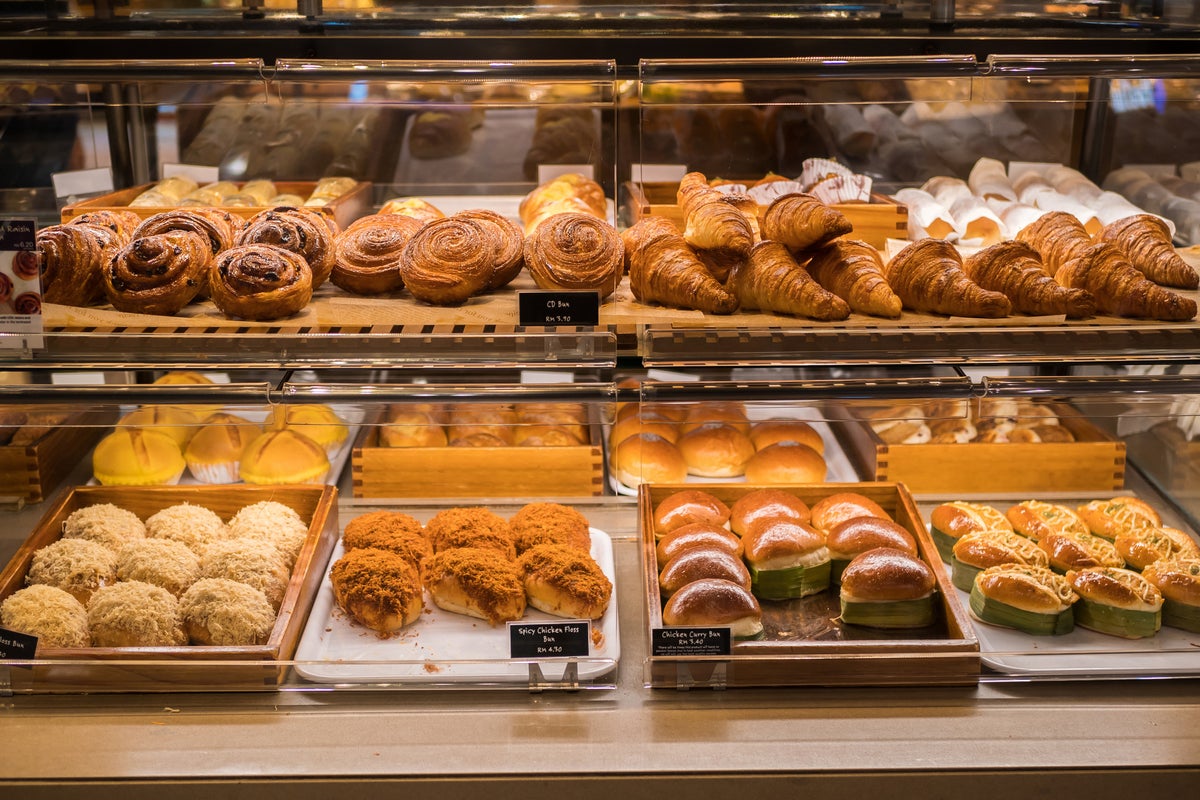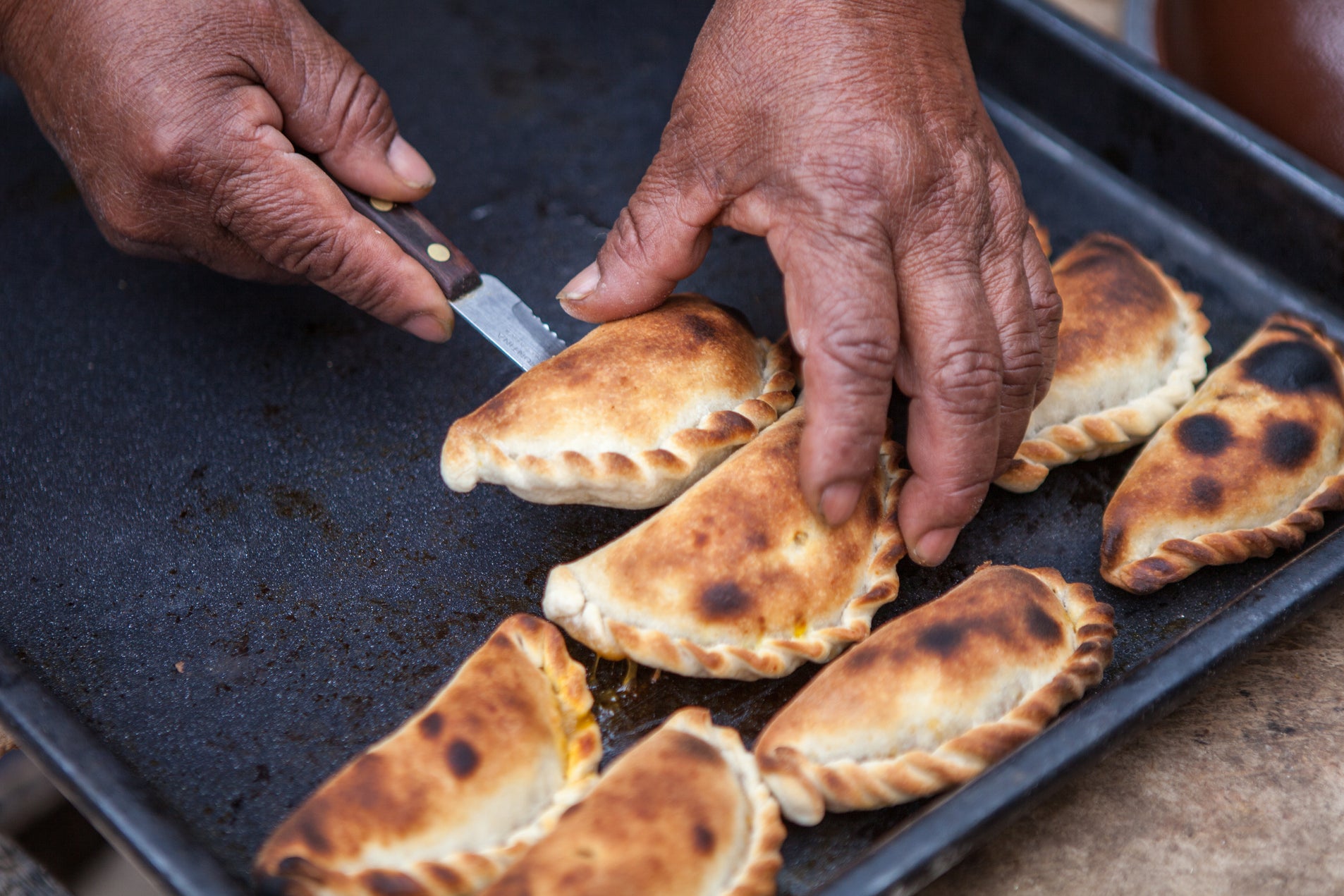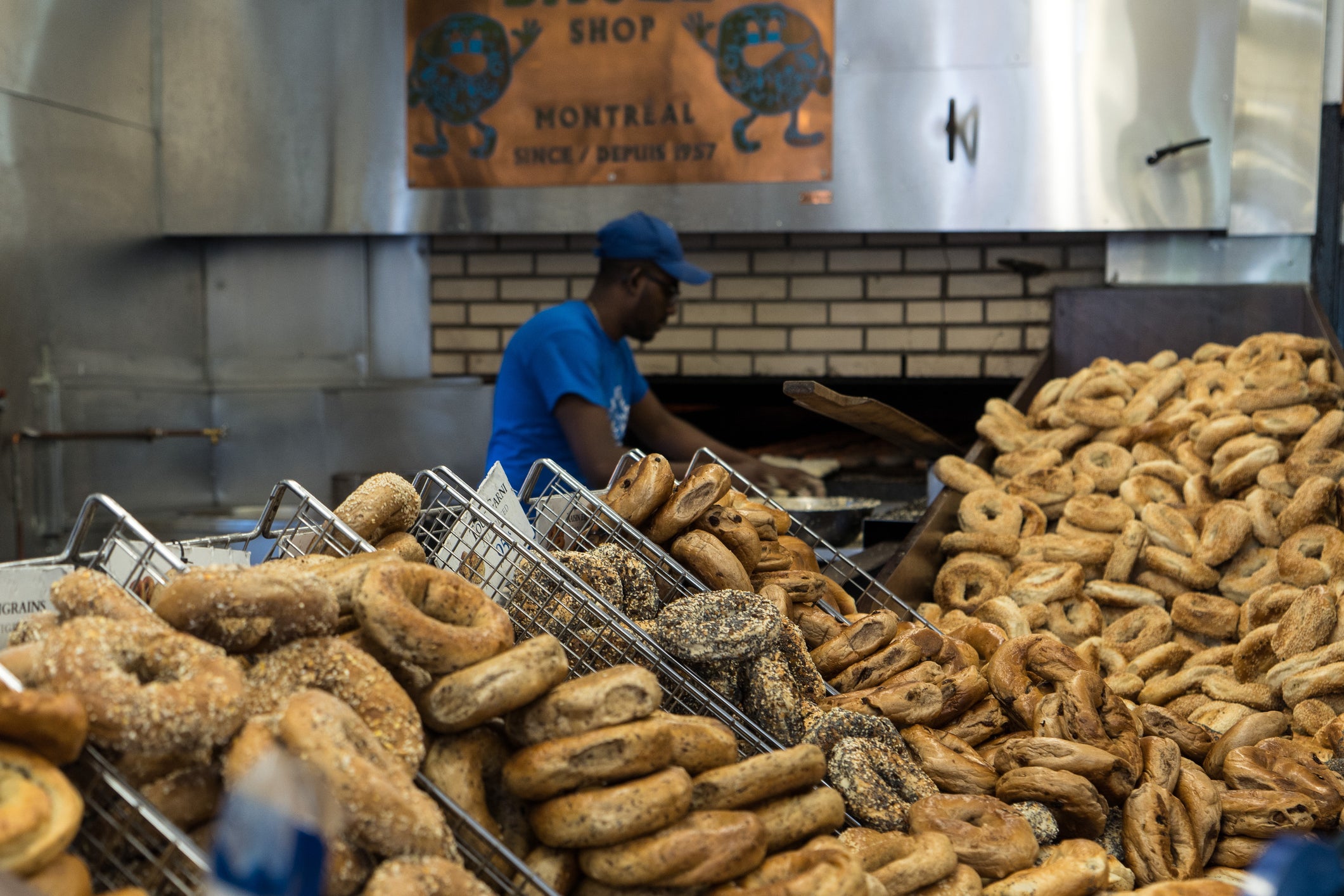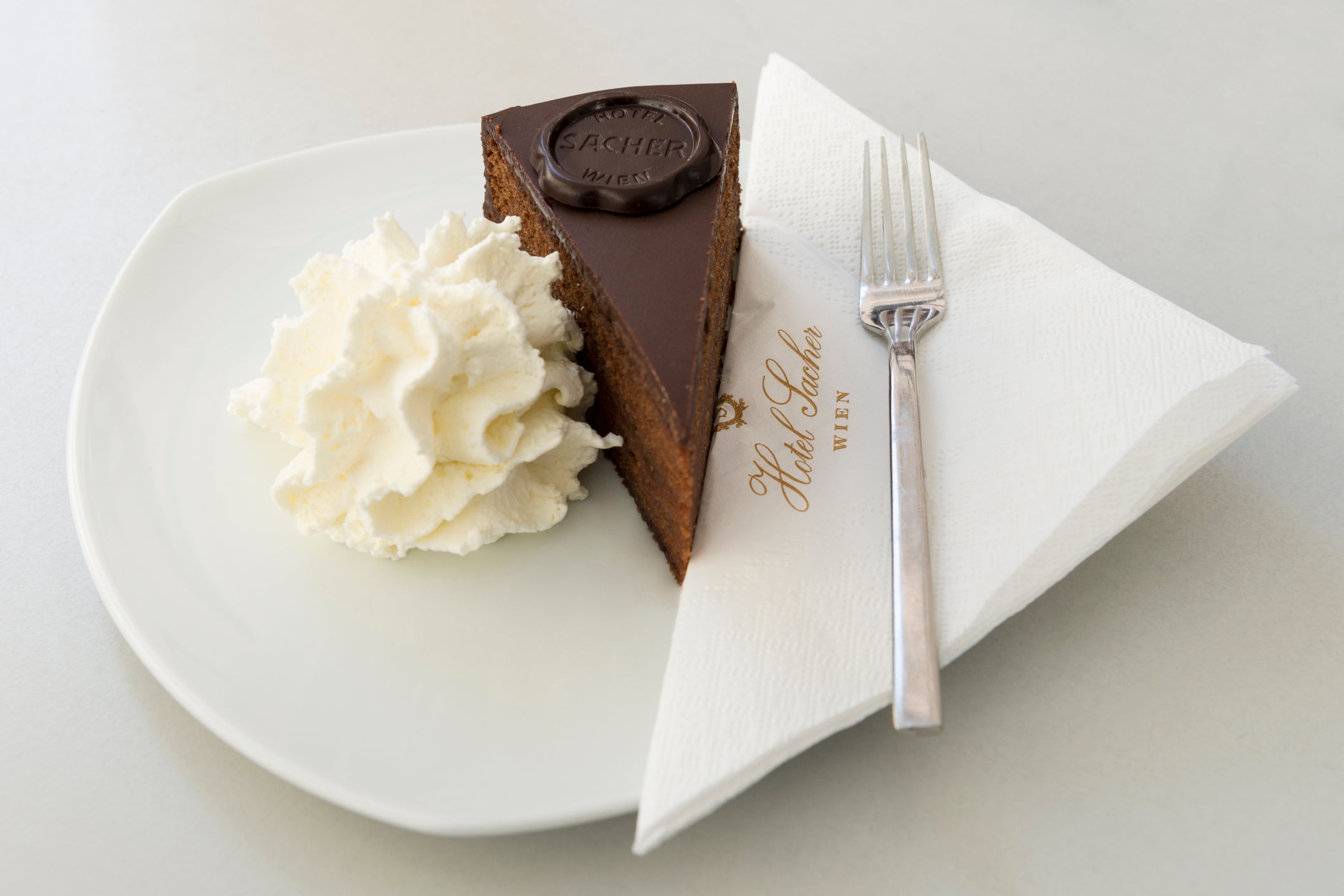
Getting to know a destination is sometimes best done through your belly; swapping long guided walking tours for a cafe crawl, ditching the sightseeing for a supper or spending your cash on speciality drinks rather than in the shopping district.
Tucking into the culinary culture of a location can tell you just as much about the area, its heritage, history and community as hitting up the local landmarks can. With the rise of bakery tourism on social media, it shows tourists are intrigued by handcrafted treats which can reveal an awful lot more about culture through their creative designs, flavours and skills – and willing to travel for good food.
While heading to a city for a Michelin-starred meal or visiting districts for their street scene are likely the must-dos for most itineraries, a reputation alone seems enough to draw bakery-lovers in and encourage them to make the pilgrimage. It’s the unusual baking techniques, hyper local produce specific to that area, and flavours that can’t be replicated elsewhere that’s driving those with a sweet (and savoury) tooth to travel such distances.
From the Parisian patisserie, the Austrian coffee houses to grab and go street stalls in countries like India, the common thread is they’re able to provide that all-important treat, which a local high street chain cafe just can’t suffice.
From kanelbullar, Swedish cinnamon bun,a pain au chocolat from Paris, to sourdough made in San Francisco, we have rounded up the best destinations to visit depending on your favourite bakery item. While it's not a comprehensive list, the original destinations of these snacks and popular bakery hot spots will inspire you on your next bakery world tour.
Sweet pastries

Arguably, the sweet pastry capital of the world stands strong in Paris, famed for its light and flaky treats such as the pain au chocolat, the humble croissant, the light and airy éclair, crème pâtissière and puff pastry-layered millefeuille, to name a few.
Just as French fine dining has forever been rooted within the country’s character, French pâtisserie holds an important place in its history and culture, stemming from the drive to master the art of pastry making and often driven by the bourgeoisie's desire to eat such delicate and sophisticated treats. To seek out some of the best of Paris’ sweet pastries, La Maison d’Isabelle is known for its award-winning croissants, with a crispy exterior with a fluffy inside, or head over to L'Eclair de Génie for, you’ve guessed it, for unique and immaculately decorated light choux éclairs.
The one nation that is a true contender to France’s sweet treat domination is of course, Austria. It’s famed for its indulgent desserts and the high art of Viennese patisserie that has been shaped by the sugar addiction of the country’s imperial courts, which later began influencing Paris’ pastry scene with the rise of the Viennoiseries in the 1800s. One particular delicacy is the apple strudel, popularised in the country during the 18th century, which is made up of fresh apple, cinnamon, raisins and sugar, all wrapped in a blanket of paper-thin strudel dough that is light and crispy when baked. One of the top spots to sample the strudel for yourself is at Café Landtmann, a historic Viennese coffee house that serves apple strudel with whipped cream, vanilla sauce or vanilla ice cream.
What these two countries have in common is that their bakes are centred around their love for coffee, Paris with its cafe culture its and Vienna with its trips to the kaffeehäuser (coffee house). This is no different in Italy, who often sip on an espresso accompanied by a sweet snack. If you are seeking a traditional Sicilian treat, check out I Segreti del Chiostro or Cannoli & Co on the island for a cannoli, a pastry consisting of fried pastry shell, that once bitten into makes way to a sweet ricotta filling, often topped with orange zest or pistachios.
Read more: Where to eat in Paris in 2025 - from classic bouillon restaurants to a street food market
Another country where bakery crawls can more than fill up your city break itineraries is Denmark, home to the many-layered laminated sweet pastry, also inspired by Viennoiserie tradition and known locally as a spandauer. This sweet snack is often topped off with a dab of custard cream or jam in the middle, with some of the most premium pastries of this kind found in Hart Bageri or Juno in Copenhagen.
Moving away from the grab-and-go pastries we may pick up in between city sightseeing or for an afternoon coffee pick-me-up, Spain is the place to visit to devour authentic churros, far better than the bag you will get at any fun fair or seaside pier in the UK. More specifically, fans of these fried choux pastry fingers should take a trip to Madrid, where Chocolatería de San Ginés has been satisfying customers since 1894 with its churros, paired with thick hot chocolate to dip in.
For a pastry that sits within the verges of sweet and savoury, Greece’s bougatsa breakfast food is traditionally made of filo pastry filled with a semolina-based custard or cheese, topped with sugar or cinnamon depending on the region. If you are in Thessaloniki, grab a slice at Bantis or Giannis, or head to Crete, where travellers have raved about the bougasta from the bakeries Chania or Iordanis.
Similar to the bougasta, the traditional Arab dessert Knafeh also plays with sweet and savoury flavours, using spun pastry dough named kadayif, layering with cheese before soaking in a sweet sugar syrup. Variations are made in Palestine using Nabulsi cheese, which is also popular in Jordan, and in Hatay, Turkey, which uses mozzarella-like Hatay cheese. Dubai Chocolate, which is currently having its moment on social media and has sparked supermarkets across the globe to sell their versions, is inspired by the Palestinian dessert knafeh, using shredded pastry inside its bars.
Fans of egg custard tarts need look no further than Portugal, whose crispy yet creamy pastel de nata have inspired recipes all over the world. Many visitors to Lisbon head straight to Pastelaria Aloma for their award-winning takes on these classic delights.
Read more: From fry-ups to Michelin stars – how Tenerife became a foodie paradise
Savoury pastries

If you prefer a savoury snack over a sweet treat, bakeries do not discriminate when it comes to spotlighting salty and spicy pastries, filled with aromatic vegetables or layers of cheese, among their baked goods. If lots of filling is what you are after, Spain, South America and the Philippines have mastered this with the empanada, a stuffed pastry, either baked or fried, that is filled with meats, cheeses and vegetables, or even sweet ingredients, depending on what region you visit. One area that is famous for its empanadas is Salta, Argentina, where bakeries will often fire their patties in clay ovens to achieve a charred crust on the outside, found in spots such as La Salteñeria and Doña Salta.
A distant cousin of the empanada can be found much closer to home in Cornwall, whose pasties are a holiday favourite of those visiting the county. While there is some debate as to whether its true origin should be attributed to neighbouring Devon, the pasty has remained an important part of the area's heritage, used by tin miners as its thick crust made it easy to eat without cutlery. The traditional Cornish pasty wraps beef cubes, potatoes, swede and onion in a thick blanket of shortcrust pastry. While it's hard to name all the best Cornish pasty joints in the region, Sarah’s Pasty Shop in Looe and Philps Pasties in Marazion are known for their generous fillings and handcrafted goods.
Read more: This little-known Croatian region makes wine loved by the royal family – with bottles as cheap as £4
Much like the pasty, the UK is also known for its pie heritage, popularised on the Isles in the Middle Ages. Each year, pie shops and bakeries around the country compete in the British Pie Awards, and 2025’s supreme pie of pies champion went to the deep-filled donner kebab pie found at Boghall Butchers of Bathgate in West Lothian, Scotland.
Away from the UK, there’s hundreds of variations of the simple pie. Among the most loved is samosas in South and West Asia, which vary from region to region, and are mostly found at street stalls stuffed with meat, vegetables and spices, tucked within a crisp pastry crust, which make for a quick snack Over in Latin America, the pastel is also a popular street food in Brazil, very similar to an empanada, but often it has a thinner crust and is deep-fried for a crispy finish.
A twin to Greece’s bougatsa is börek (thin flaky filled pastry) popular across Turkey, the Middle East, and the Balkans. One location renowned for its spinach börek and recommended by critics is Buregdžinica Bosna in Sarajevo, Bosnia and Herzegovina, forever busy with people pining for a slice of its meat-filled or spinach and cheese pastries cooked in crispy layers of flaky filo, topped with yoghurt.
Read more: Inside the secret world of covert restaurant bookings where customers are ranked to get a table
Bread

Over in Australia, two bakery chains named Bakers Delight and Brumby’s are known for their cheesymite scroll, using an Aussie classic, yeast extract Vegemite spread, and pairing it with melted cheese wrapped up in a swirl of bread dough. If you are looking for a more high-end version of this Australian delicacy, the sophisticated Lune Croissanterie (also known for its exceptional croissant creations) sells a cheese and Vegemite escargot pastry, filled with Vegemite béchamel and gruyère cheese.
If you are looking to sample a sweeter version of Australia’s scroll, the best place to travel to would be Sweden to indulge in a cinnamon bun, known locally as kanelbullar, during a fika coffee break. The buns are created using a long string of cinnamon-spiced pastry dough wrapped into a ball, bound by a sticky-sweet cinnamon syrup, and topped with pearl sugar. In the capital, Stockholm, Robin Delselius Bageri sells traditional and innovative buns, while over in Gothenburg, Café Husaren attracts people from all over for their giant buns.
While not as sticky and sugary as the Swedish kanelbullar, the UK has its slightly spiced treat: the hot cross bun. Made with warming cinnamon, nutmeg and allspice, it’s peppered with dried fruit and a cross is piped over on the top. The UK and other countries have eaten this bun traditionally as part of breaking fast on Good Friday to commemorate the crucifixion of Jesus. To seek out this bread bake, head to Loafing or the Redbournbury Watermill & Bakery in St Albans, which created the Alban Bun, a precursor to the hot cross bun, are popular places to pick up these traditional treats.
While it's always tempting to pick up a sweet treat at a bakery, home-baked bread in the form of warm loaves, crusty rolls, and soft and fluffy baguettes also attracts foodies far and wide, whether sitting in for a generously filled sandwich or simply tearing off bites en route to the park. Bagel lovers should consider a trip to Montreal in Canada for their famous boiled hand-shaped bread, with signature poppy-seed, sesame or cinnamon and raisin bagels found at St-Viateur Bagel. For a city break centred around baguettes, the obvious choice is Paris, where boulangeries, such as Utopie, sell their well-known French sticks sprinkled with sesame seeds. If you are seeking the perfect slice of sourdough to accompany your avocado toast in the morning, a trip to San Francisco is in order, where Tartine has perfected the art of sourcing the right grains and fermenting process to create a whole grain loaf with a crisp, dark crust.
Read more: ‘We use food to tell stories, to nourish, and to heal’ – on the culinary trail through Mississippi
Cakes and other treats

If pastry or bread is not your thing, and you would prefer to lose yourself in the sweetest of sweet treats, it's best to pursue the locations prized for their cakes and other sorts of sugary confectionery. Your first stop should be the USA, the masters of taking everything to the next level. Brownies hail from Chicago, specifically the Palmer House Hotel, whose cafe still sells their fudgy glossy creation, using dark chocolate, walnuts and apricot preserve. Over in New York’s SoHo neighbourhood, it’s the source of the flaky, sweet amalgamation of a croissant and a doughnut, lovingly known as the cronut, created by pastry chef Dominique Ansel.
Europe also has its fair share of pulling in the cake lovers, with sponge cake delicacies from the British Victoria sponge, to the black forest gateau in Germany. Unfortunately, Café Schäfer in Triberg, which was famed for its authentic black forest cake, closed in 2020, but this cherry-fuelled sponge is also sought after at Café König in the German town of Baden-Baden.
Aside from its formidable pastry reputation, Austria’s sachertorte (chocolate glazed cake) is well worth getting on a plane for alone. Hotel Sacher in Vienna is the place to head for this glossy chocolate cake – which was first created to appease an Austrian prince – where traditional Viennese coffeehouse sells slices of this sought-after sponge.
While there is so much to choose from in Paris when it comes to baked goods, with hundreds of boulangeries and patisseries, a long-time favourite is the madeleine – small traditional shell-like shaped sponge, often eaten as an afternoon tea snack. Head to Le Comptoir de Madeleine or Mado à Paris to indulge in the light and airy cakes, or if you want to forego sponge altogether, seek out Ladurée or Pierre Hermé for macarons, another star in the Parisian confection crown.
Read more: Delve deeper into Izmir’s surprising and growing fine-dining scene
Projectile vomiting and ayahuasca ceremonies – Tribe with Bruce Parry
Where will the next season of The White Lotus be filmed? Our travel desk predictions
The best holidays to book for June 2025
What is Dis-loyalty? The travel membership for savings on hotels
The best Airbnbs for surfing in Cornwall, Australia and more surf hot spots







